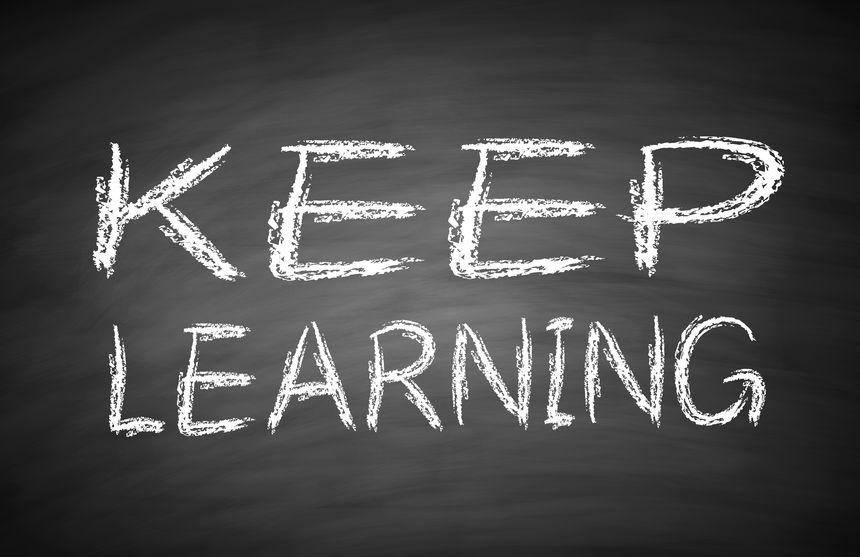
Every industry has its own jargon, buzzwords and acronyms, and content marketing is no exception. To be successful, marketers need to know what content marketing terms are, how to use them and why they matter. Here’s a list of 31 commonly used content marketing terms to help you evaluate your marketing acumen.
Content Marketing Terms

- A/B Testing is a simple experiment used with marketing campaigns. One campaign has a control subject (messaging) and the other has a variable subject (messaging). Run both campaigns with identical parameters to see which performs better. Use A/B testing to optimize messaging, website elements, email subject lines or advertising.
- Backlinks are utilized on someone else’s website to link back to your own content. Building a variety of backlinks with other relevant companies, publications and content creators is a highly effective way to boost digital visibility and SEO.
- Blogging is a popular content medium for organizations and thought leaders to share their expertise with audiences. Ideally, publish blogs consistently on the company’s website and promote them on other platforms. They are a consumable, informative and frequent resource and one of the top three most used types of marketing content.
- Bounce Rate is the percentage of visitors who land on your website and leave after viewing a single page. Evaluating bounce rate helps marketers understand which content is resonating with audiences and which isn’t.
- Brand Awareness is the impact and visibility that your brand has on prospects and customers. Brand awareness is important because it creates a meaningful connection and, therefore, a relationship between your customers and your company. Content is one of the most powerful ways to build brand awareness.
- Buyer Personas are the profile and characteristics of your target audiences. Define buyer personas by research and data of the current clients, prospects and networks your organization interacts with. Understanding buyer personas allows you to create content that resonates with the right audiences.
- Call-to-Action (CTA) is a device, graphic or piece of content used to induce a user to perform a specific type of action. CTAs include clicking-through to view additional content, signing up for an e-mail list, contacting a representative or making a purchase.
- Click-Through Rate (CTR) is the percentage of users who click on a specific link on a page, email or advertisement versus the total number of users who view it. This rate allows you to understand the success of calls-to-action and the messaging that connects with readers. (See A/B test.)
- Content Curation is the process of gathering information from varied sources relevant to a particular topic or area of interest, usually with the intention of adding value. Organizations often curate content from other companies or thought leaders via social media, email outreach, newsletters or blogs to create connections and share valuable information.
- Conversion Rate (CR) is the percentage of users who interact with your content or visit your website and then become a client or customer. Evaluating conversion rates leads to a better understanding of what is and isn’t working in your outreach.
- Customer-centric Content is a focused approach to creating and distributing content that addresses the needs, challenges and interests of your customers. Customer-centric content develops trust and respect and boosts the desire to do business together.
- Customer Experience (CX) is the entire range of interactions a customer has with a company through its brand, website, content interaction, advertising, customer service and sales representatives. The customer experience is a vital part of building and maintaining meaningful customer relationships.
- Data Analytics is the discovery and communication of meaningful patterns in data. Based on the information collected and analysis of data, marketers can learn how customers interact with a company’s marketing content across all platforms.
- eBooks are digital books designed to be read on a device like an e-reader, smartphone, laptop or tablet. They may contain text, images, links or interactive elements. eBooks can be downloaded and purchased and are powerful ways to share in-depth knowledge and thought leadership.
- Earned Media is content created by someone else about your company that you didn’t pay for. Press coverage is a common type of earned media. It also can include awards, client reviews and testimonials and being featured in articles or content from other companies.
- Infographics are a combination of graphic design, content and data. They are a visually compelling communication medium enabling marketers to present complex information telling a story or transforming information into a single captivating graphic. Ideally, an infographic is short and consumable and is shared via social media.
- Key Performance Indicators (KPIs) are a type of performance measurement used to evaluate the success of defined initiatives. Examples include revenue, social media engagement, website traffic, leads generated and customer retention.

- Lead Generation is the process of attracting prospects who have an interest in and potential need for the products or services a company sells. Effective lead generation is a priority for most businesses as it drives potential customers into the sales funnel. Content development can be the first step in the process.
- Link Building is a strategy to create a network of links within and surrounding your website’s content to keep potential customers or search engine crawlers browsing your website. By creating an effective network of links on your website, users can navigate content easily and discover the information they need.
- Owned Media is any content developed by your company, for your company. It is proprietary in nature. Share owned media via platforms or locations that you also own, such as your website.
- PageRank is Google’s search algorithm that ranks web pages in search engine results based on the number and quality of links to a page. PageRank is vital to search engine optimization and content visibility.
- Paid Media involves any content where the output or placement is paid for by your organization. This includes advertising in print magazines or newspapers, TV, radio, search engines or social media.
- Podcasts are digital, conversation-based series, often centered around interviews with industry experts. This type of content is growing in popularity and allows listeners to engage with and easily access knowledgeable experts.
- Public Relations (PR) encompasses the strategies and tactics a company uses to create a public’s perception and opinion of an organization through external communications and brand management. PR channels include traditional mediums such as newspapers, radio and television as well as newer channels such as the internet and digital communications.
- Press Releases are official statements about a topic or event organizations make and issue to media outlets. Generally, distributed across newswire services, they tend to be time-sensitive. Press releases share valuable news and groundbreaking information to a wide range of audiences.
- Return on Investment (ROI) is the measurement of gains or losses on a particular initiative or expenditure. In an ideal world, use ROI to assess the financial return of a specific marketing program or the effectiveness of a company’s overall marketing efforts. When financial ROI isn’t possible, other indirect measurements include brand awareness, customer and social media engagement, marketplace visibility and new customers.
- Search Engine Optimization (SEO) is the practice of optimizing your website so that it ranks higher on a search engine results page. The goal is to increase the company’s visibility on search platforms such as Google. Methods for SEO include keyword use and link-building.
- Search Engine Results Page (SERP) is the page displayed in response to a search engine query. Results are ranked according to the search engine’s algorithm. Most companies strive to appear on the first page of results based on common and the most appropriate search terms.
- Social Media Marketing is any type of marketing communications distributed via social media platforms. These platforms include Facebook, Twitter, LinkedIn, Instagram, Pinterest and YouTube. The latest figures show there are 3.78 billion social media users worldwide. Social media marketing is essential to content distribution and engagement.
- Target Markets are the specific industries or audiences that can most benefit from your products and services. Defining the profile, needs, habits and challenges of these buyers is crucial for developing valuable content and generating revenue.
- White Papers are authoritative, in-depth reports on a specific topic that present a problem and provide a solution. White papers are typically free digital resources available for download from companies and thought leaders.
Ongoing Education is the Sign of a True Professional

This list barely scratches the surface of the content marketing terms used by today’s marketers. New content marketing terms are added daily. Use this list as your jumping-off point and continue seeking knowledge to stay on top of content marketing trends, technologies and best practices. Remember, the sign of a true professional is they never stop learning.
